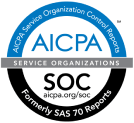By Healthesystems
Heat-related illnesses (HRIs) increase dramatically with higher temperatures, with 90% of HRI claims occurring on days exceeding 80°F. That’s one finding from a new report by the Workers’ Compensation Research Institute (WCRI), published in December 2024. The report comes on the heels of several other newsworthy items related to workers and extreme heat.
According to Public Citizen, heat exposure is responsible for as many as 2,000 worker fatalities and up to 170,000 injuries in the United States each year. And HRIs are taking center stage as more reports confirm the risks and more states enact laws to protect workers.
Though we’ve reported on workers’ comp and climate change in the past, it’s time to take a fresh look at the latest heat-related developments in workers’ comp.
New Reports Bring New Insights
Several new reports on workers and extreme heat were published in 2024, with each offering new insights. In May, WCRI issued a report that measured the extent to which excessive heat has increased the incidence of work-related injuries. Among the findings:
- HRIs increase by at least sevenfold on days when temperatures exceed 90°F compared to days with temperatures between 75°F and 80°F.
- The probability of work-related accidents increased by 5-6% when the maximum daily temperature rose above 90°F, when compared to a day in the 65-70°F range.
- For construction workers, injury frequency increased 8% in temperatures above 90°F.
Also in May, the New York State Insurance Fund published a report that reviewed the relationship between extreme temperatures and higher rates of on-the-job injuries. A major finding is that claims were 45% more likely to occur when the heat index was over 80°F, while injury severity increased by 20%.
In October, NCCI published a report that examined the link between weather and claim frequency. Findings include:
- Hot temperatures are associated with more workers’ comp claims than days with mild temperatures, with up to 10% higher claim frequency.
- Starting around 50°F, there is about a 1% increase in injuries for every five-degree increase in temperature.
Finally, the WCRI report mentioned in the introduction was published in December. It utilized workers’ comp data from across 31 states, accounting for approximately 80% of workers’ comp benefits in the United States. Among the findings:
- HRIs make up 210 out of every 100,000 claims – approximately 0.21% of claims.
- Younger workers under 35 had the highest rate of HRIs among age groups, at 250-300 HRIs per 100,000 claims.
- Workers with two months or less of job tenure saw rates of 345 HRIs per 100,000 claims – indicating that inexperience drives up the likelihood of HRI.
- Male workers experienced triple the HRI rate versus female workers.
A Federal Heat Standard – Still in Progress
As more heat-related deaths and injuries occur, the first-ever nationwide standard to offer protection from extreme heat continues to make its way – albeit slowly – through the legal system. Titled Heat Injury and Illness Prevention in Outdoor and Indoor Work Settings, the rule would protect both indoor and outdoor workers from extreme heat exposures and would require employers to create a plan to evaluate and control heat hazards in their workplaces.
The rule was first published in the Federal Register in August 2024 with a public comment period scheduled to end on December 30. The Occupational Safety and Health Administration (OSHA) then extended the comment deadline to Jan. 14, 2025, and announced an informal public hearing on the proposed rule will begin on June 16. However, with the Trump Administration taking power in January 2025, the future of the federal rule is uncertain.
In the meantime, OSHA has extended its National Emphasis Program on heat-related hazards for another year. Under the program, which was set to expire April 8, OSHA conducts heat-related inspections of high-risk industries if the National Weather Service issues a heat warning or advisory for a local area. Since the program began in 2022, OSHA has conducted 7,000 heat-related inspections and issued 60 heat citations.
The States Continue to Weigh In
In the absence of a federal heat protection rule, individual states continue to introduce and/or enact their own legislation to protect workers. Still, as of this writing, only seven states have heat-related mandates in place: California, Colorado, Maryland, Minnesota, Nevada, Oregon, and Washington.
Maryland and Nevada are the latest states to adopt heat regulations, with their bills passing in September and November 2024, respectively. Several more states have also introduced heat protection legislation: Rhode Island in April 2024 (SB 2900); New Jersey in November 2024 (S 2422); Florida in January 2025 (HB 35); and Illinois (SB 2501) and Arizona (HB 2790, SB 1330, and HB 2382) in February 2025.
In related news, in December 2024 the California Division of Occupational Safety and Health (Cal/OSHA) announced its first willful heat violation citation in more than five years. The department issued $276,425 in penalties to a landscaping company, stating that the company failed to provide employees with required protections, such as access to water, shaded areas, and proper training on preventing heat-related illnesses. This citation represents a positive step forward for worker heat protections. We’ll continue to report on this important and evolving topic in the months and years ahead.






